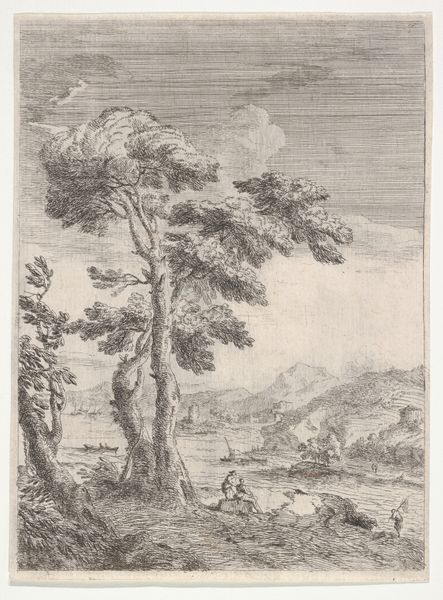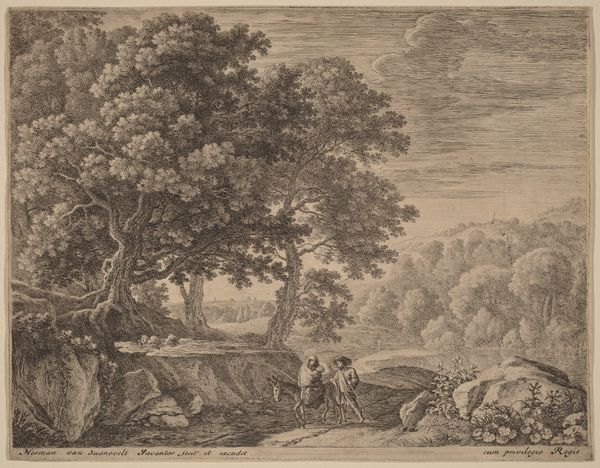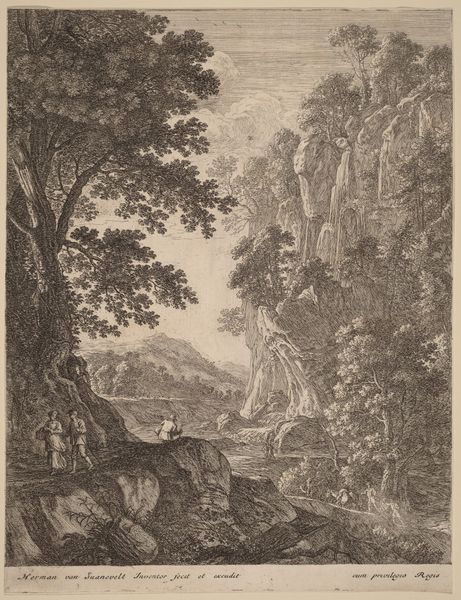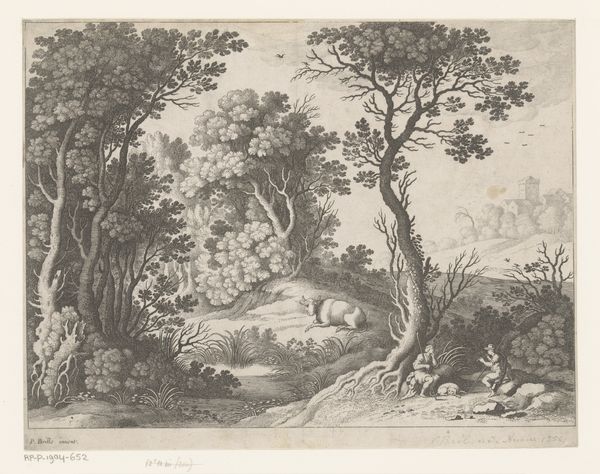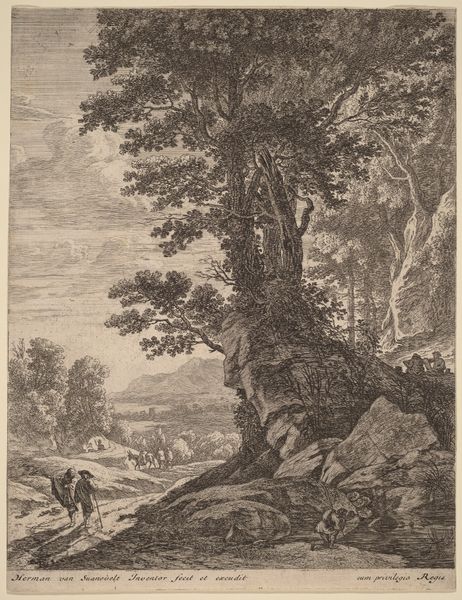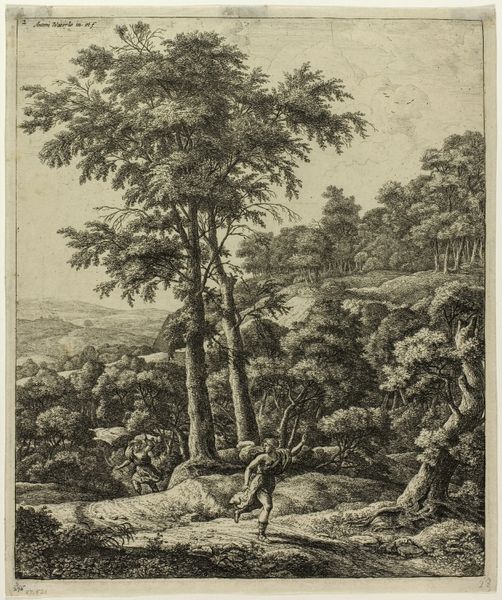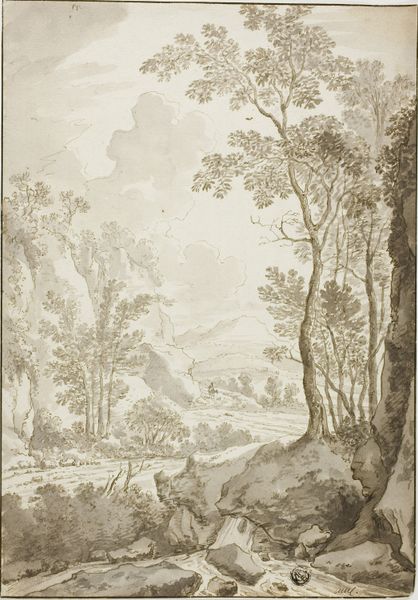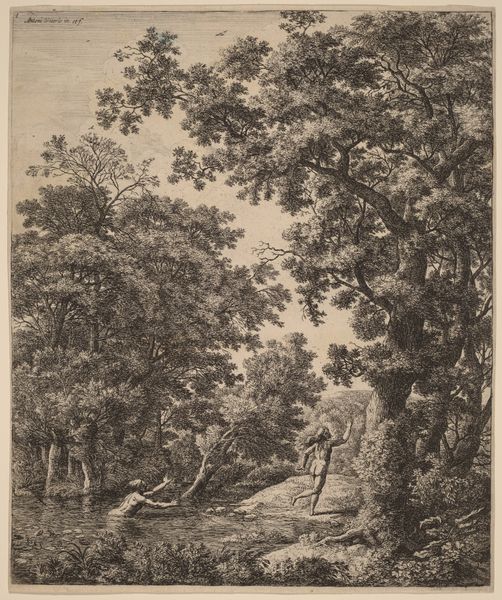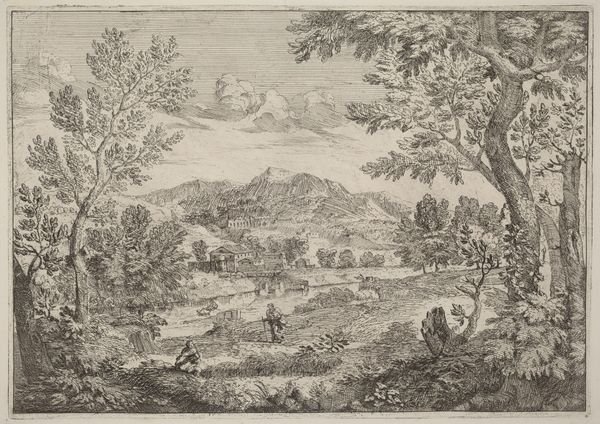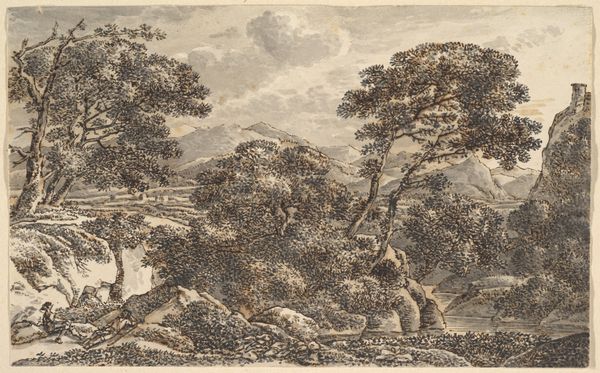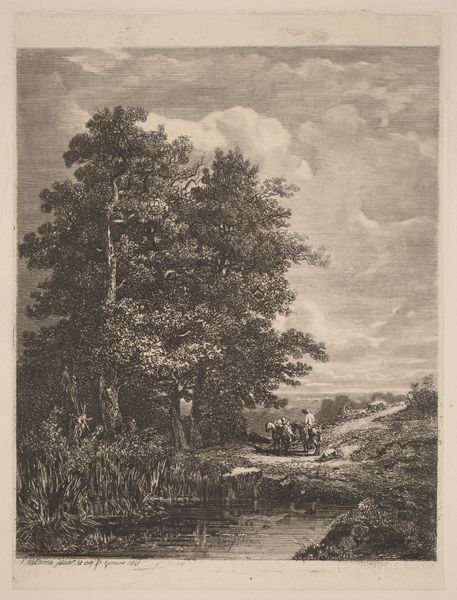
print, etching
#
narrative-art
#
baroque
# print
#
etching
#
landscape
#
figuration
#
line
#
cityscape
Copyright: National Gallery of Art: CC0 1.0
Curator: This is Herman van Swanevelt's etching, "The Mule Driver." Note the dynamic composition; Swanevelt meticulously organizes light and shadow across the entire picture plane. What are your first thoughts? Editor: Immediately, I'm struck by the contrast between the detail applied to the landscape's surfaces, foliage, and sky, with the humble, almost dismissible, presentation of the laborers working amidst it. Curator: An interesting reading. Swanevelt’s skill as an etcher really shines here. See how he uses varying line weights to create depth and atmosphere? The foreground foliage, the middle ground figures, the distant buildings all recede seamlessly into a perceived three-dimensional space. Editor: Indeed, a space enabled by their manual labor. And look at how labor itself is presented, in multiples, whether it's herding sheep, or the namesake "mule driver". It looks like Swanevelt really considers how different roles co-constitute society, and each needs to work to benefit each other. Curator: Precisely. Consider the pictorial structure— the dark mass of trees on the left, balanced by the lighter open landscape on the right. The lines of the path guide our eyes into the distance, reinforcing the relationship between the known and the distant, civilization, and nature. It’s a sophisticated spatial construction. Editor: Although, I'd challenge the implicit binary of 'civilization versus nature,' particularly as the figures are so intertwined with their surroundings; they’re inseparable. It reminds me how often art practices elide or erase those human processes, specifically the hands that produced that kind of labor which went into realizing them, not to mention their role in society itself. Curator: Still, the emphasis on line as a fundamental structural element – consider the delicate hatching, the crisp definition of forms — creates an interplay between tangible object and something altogether more ethereal, almost atmospheric. Editor: Perhaps by considering the conditions in which these landscapes were made, we are brought back to that which connects it to our social reality; after all, isn't that why this kind of landscape endures? Curator: A compelling idea to ponder! Editor: Agreed, certainly leaves a lot to consider about landscape depictions.
Comments
No comments
Be the first to comment and join the conversation on the ultimate creative platform.
